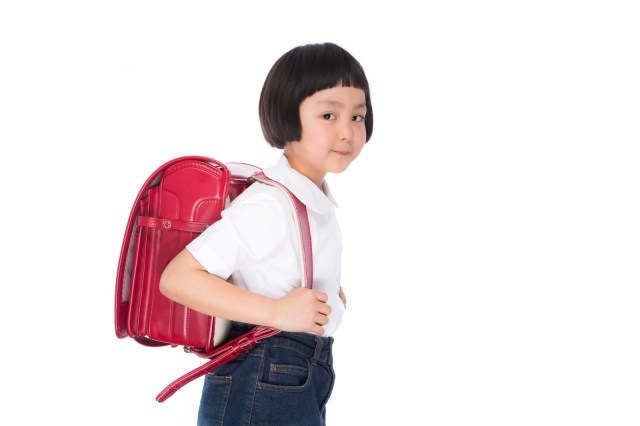
A trend a century and a half in the making.
April is the beginning of the school year in Japan, and it’s a time when many young students strap on their boxy leather (or often simulated leather) randoseru backpacks for the first time. Even without living in Japan, you may have seen these sturdy but expensive carriers in anime, film, or one of our many articles about them.
But why does Japan of all countries use these distinctly old-fashioned western designs?
It all started around the end of the Edo era in the middle of the 19th century. After Japan was opened up to trade with other countries, western culture and fashions became a craze.
▼ Suit jackets and samurai swords weren’t exactly made for each other, but these guys made it work.
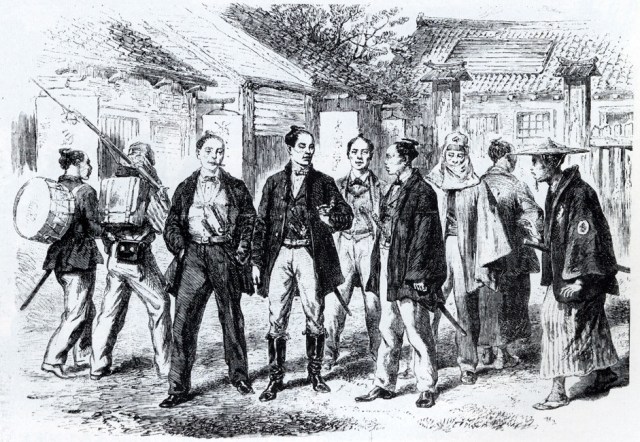
This was true for military technology at the time as well, and the concept of using backpacks to free up soldiers hands was adopted. Early on they were given the Japanese name of “haino” but in keeping with the western wave of influence, the Dutch word “ransel” was also adopted into Japanese as “ranseru” or “ranuseru.”
It’s a bit of a mystery how a “do” was added to the middle of the word. One theory is that the Dutch “ransel” was conflated with the German “landser” which refers “foot soldier.” Logically it makes a lot of sense, but according to German dictionaries “landser” gained prominence during WWII. Its origins could be traced back to the late 19th century, but that would mean it was a brand new term even in German when it first appeared in Japanese.
▼ These Japanese soldiers in the 1890s probably weren’t concerned with Dutch and German linguistics enough to take note of it
In military texts imported from the Netherlands and translated in the 1860s the kanji characters for “haino” were given a katakana subtitle of “rantoseru.“ At that time “t” and “d” weren’t so clearly distinguished in Japanese, but even still, the timing is really tight for “landser” to have migrated from German to Dutch to Japanese. It’s not impossible though.
Another possibility is that adding a “to” or “do” simply made the word easier for Japanese people to pronounce. Other words that made the leap from Dutch to Japanese have also been slightly altered – presumably for comfort – such as “penki” which means “paint” and stems from the Dutch “pek,” and “kamitsure” which came from the Dutch “kamille” which means “camomile.”
In these early years, randoseru were still totally made of cloth. It wasn’t until the beginning of the Meiji Era and the establishment of the Imperial Japanese Army that soldiers were fitted with square leather packs which began to resemble those used by children today.
▼ A platoon of new Imperial Army recruits led by Tom “I’m-too-cool-for-randoseru” Cruise
Speaking of children, the other western influence that marked the change from the Edo to Meiji Era was an end to the samurai aristocracy in exchange for a more democratic society. Part of this meant opening up education beyond the nobility.
▼ Goofing off in class would no longer be a privilege but a right.
One such school was Gakushuin, an educational organization set up in 1847 to teach the aristocratic children of Japan. In 1885 they made a few changes to keep up with the times, including the opening of a school for women as well as an experimental elementary school which members of any social class could attend.
The overarching principle of this new school was to enforce a sense of equality among students, and wealthy children were forbidden from commuting in carriages or rickshaws. Furthermore, they weren’t allowed to use servants to carry their school supplies for them. Instead all students had to carry their own supplies in any kind of backpack.
In 1887, an eight-year-old boy by the name of Prince Yoshihito – who would grow up to become the emperor of the Taisho Era – enrolled in this school. To celebrate this occasion Japan’s first prime minister, Hirobumi Ito, gifted the prince a leather school bag that looked just like the ones used by the Imperial Army.
▼ By the time this photo of Prince Yoshihito was taken in 1892, he had already dropped out of Gakushuin due to health issues
Idol groups were still nearly a century away, so when it came to trendsetters back then, one needn’t look any further than the crown prince of Japan. Leather military-grade randoseru became the hot school supply of the era, but their cost was beyond the means of many people, and Japan’s ensuing wars and defeat in World War II made leather randoseru an even more unattainable item. It took about a decade for the economy to pick up enough and material costs to drop enough for these bags to come back into fashion around the mid-’50s. Then, once the bubble economy took hold in Japan and people started spending money like water, these bags went from being a status symbol to a cultural standard.
▼ They were so hot, you didn’t even really have to show them that much in commercials.
It’s a norm that continues today despite the generally icky economic situation.
Still, the average 50,000-yen ($450) cost of a randoseru can be rationalized by their longevity (and it’s often doting grandparents with cash to spare who pick up the tab). One bag will often last a student their entire time at elementary school which can stretch their cost out to about 8,000 yen ($70) a year, but also means the kid better be really committed to their love of Mickey Mouse or Harry Potter.
The duration of the entire concept of randoseru has also impressively lasted throughout the whole history of modern Japan. However, with the country on the verge of converting textbooks to tablets and cloud data, the need to strap an expensive leather box to little kids’ backs will be increasingly questioned from now on.
Will the not-so-humble randoseru survive, or just evolve into something else? The answer might not be too far from now.
Source: News Online, Comzine, National Diet Library
Top image: Pakutaso
● Want to hear about SoraNews24’s latest articles as soon as they’re published? Follow us on Facebook and Twitter!

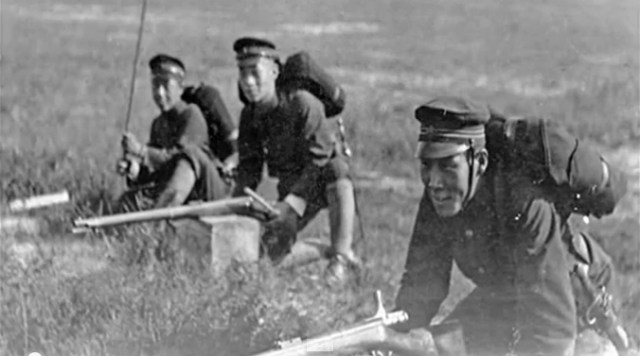
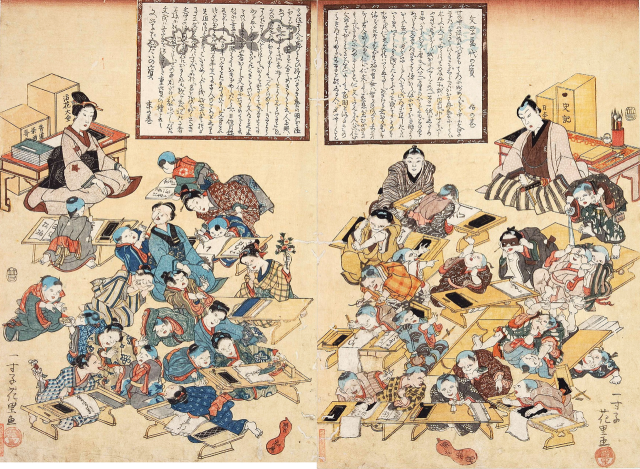
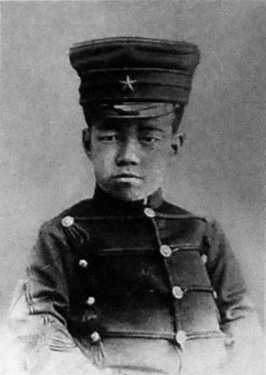
 Japanese elementary school “randoseru” bag brand creates Showa-inspired line for adults
Japanese elementary school “randoseru” bag brand creates Showa-inspired line for adults Children’s “randoseru” backpacks star in Japanese ad campaign with whimsical Victorian vibe
Children’s “randoseru” backpacks star in Japanese ad campaign with whimsical Victorian vibe Japanese company offers service that converts your child’s school bag into useful accessories
Japanese company offers service that converts your child’s school bag into useful accessories Japan’s randoseru school backpacks keep getting more expensive, so now parents can rent them
Japan’s randoseru school backpacks keep getting more expensive, so now parents can rent them Japan’s elementary school backpacks grow up with new high-class randoseru for adults
Japan’s elementary school backpacks grow up with new high-class randoseru for adults Foreigner’s request for help in Tokyo makes us sad for the state of society
Foreigner’s request for help in Tokyo makes us sad for the state of society Seaside scenery, history, and so many desserts on Yokohama’s Akai Kutsu【Japan Loop Buses】
Seaside scenery, history, and so many desserts on Yokohama’s Akai Kutsu【Japan Loop Buses】 Japanese city loses residents’ personal data, which was on paper being transported on a windy day
Japanese city loses residents’ personal data, which was on paper being transported on a windy day Do Hi-Chew-flavor Hi-Chews have a reason to exist?【Taste test】
Do Hi-Chew-flavor Hi-Chews have a reason to exist?【Taste test】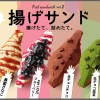 Fried sandwiches arrive in Tokyo, become hot topic on social media
Fried sandwiches arrive in Tokyo, become hot topic on social media Japanese ramen restaurants under pressure from new yen banknotes
Japanese ramen restaurants under pressure from new yen banknotes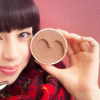 Häagen-Dazs Japan creates “Heart Hunting Campaign” with 11 different hearts hiding in ice creams
Häagen-Dazs Japan creates “Heart Hunting Campaign” with 11 different hearts hiding in ice creams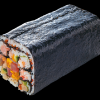 The greatest sushi roll in Japanese history is actually nine sushi rolls in one【Photos】
The greatest sushi roll in Japanese history is actually nine sushi rolls in one【Photos】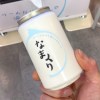 Weird Japanese vending machine find of the day: Cream in cans?
Weird Japanese vending machine find of the day: Cream in cans? Mikado Coffee is a 76-year-old coffee chain with a major celebrity connection
Mikado Coffee is a 76-year-old coffee chain with a major celebrity connection McDonald’s new Happy Meals offer up cute and practical Sanrio lifestyle goods
McDonald’s new Happy Meals offer up cute and practical Sanrio lifestyle goods French Fries Bread in Tokyo’s Shibuya becomes a hit on social media
French Fries Bread in Tokyo’s Shibuya becomes a hit on social media Red light district sushi restaurant in Tokyo shows us just how wrong we were about it
Red light district sushi restaurant in Tokyo shows us just how wrong we were about it New private rooms on Tokaido Shinkansen change the way we travel from Tokyo to Kyoto
New private rooms on Tokaido Shinkansen change the way we travel from Tokyo to Kyoto Tokyo Tsukiji fish market site to be redeveloped with 50,000-seat stadium, hotel, shopping center
Tokyo Tsukiji fish market site to be redeveloped with 50,000-seat stadium, hotel, shopping center Beautiful Ghibli sealing wax kits let you create accessories and elegant letter decorations【Pics】
Beautiful Ghibli sealing wax kits let you create accessories and elegant letter decorations【Pics】 Secret Kitchen bento serves Japanese flowers, birds, wind and moon in a box, but is it worth it?
Secret Kitchen bento serves Japanese flowers, birds, wind and moon in a box, but is it worth it? New definition of “Japanese whiskey” goes into effect to prevent fakes from fooling overseas buyers
New definition of “Japanese whiskey” goes into effect to prevent fakes from fooling overseas buyers Our Japanese reporter visits Costco in the U.S., finds super American and very Japanese things
Our Japanese reporter visits Costco in the U.S., finds super American and very Japanese things Studio Ghibli releases Kiki’s Delivery Service chocolate cake pouches in Japan
Studio Ghibli releases Kiki’s Delivery Service chocolate cake pouches in Japan All-you-can-drink Starbucks and amazing views part of Tokyo’s new 170 meter-high sky lounge
All-you-can-drink Starbucks and amazing views part of Tokyo’s new 170 meter-high sky lounge More foreign tourists than ever before in history visited Japan last month
More foreign tourists than ever before in history visited Japan last month New Pokémon cakes let you eat your way through Pikachu and all the Eevee evolutions
New Pokémon cakes let you eat your way through Pikachu and all the Eevee evolutions Disney princesses get official manga makeovers for Manga Princess Cafe opening in Tokyo
Disney princesses get official manga makeovers for Manga Princess Cafe opening in Tokyo Sales of Japan’s most convenient train ticket/shopping payment cards suspended indefinitely
Sales of Japan’s most convenient train ticket/shopping payment cards suspended indefinitely Sold-out Studio Ghibli desktop humidifiers are back so Totoro can help you through the dry season
Sold-out Studio Ghibli desktop humidifiers are back so Totoro can help you through the dry season Japanese government to make first change to romanization spelling rules since the 1950s
Japanese government to make first change to romanization spelling rules since the 1950s Ghibli founders Toshio Suzuki and Hayao Miyazaki contribute to Japanese whisky Totoro label design
Ghibli founders Toshio Suzuki and Hayao Miyazaki contribute to Japanese whisky Totoro label design Doraemon found buried at sea as scene from 1993 anime becomes real life【Photos】
Doraemon found buried at sea as scene from 1993 anime becomes real life【Photos】 Tokyo’s most famous Starbucks is closed
Tokyo’s most famous Starbucks is closed One Piece characters’ nationalities revealed, but fans have mixed opinions
One Piece characters’ nationalities revealed, but fans have mixed opinions We asked a Uniqlo employee what four things we should buy and their suggestions didn’t disappoint
We asked a Uniqlo employee what four things we should buy and their suggestions didn’t disappoint Japanese schoolkids to be able to carry their books in official Harry Potter randoseru backpacks
Japanese schoolkids to be able to carry their books in official Harry Potter randoseru backpacks Lexus creates $1,350 luxury randoseru Japanese backpack with material from its iconic sports car
Lexus creates $1,350 luxury randoseru Japanese backpack with material from its iconic sports car Japanese school bag collaborates with a limited express train company for one awesome bag
Japanese school bag collaborates with a limited express train company for one awesome bag Beautiful bag designed by leather craftsman specially for carrying watermelons is a work of art
Beautiful bag designed by leather craftsman specially for carrying watermelons is a work of art Japanese bag maker creates demon-slaying bag based on five-year-old’s sketch
Japanese bag maker creates demon-slaying bag based on five-year-old’s sketch This nonconformist Japanese schoolgirl is ready for any bullies who tease her about her backpack
This nonconformist Japanese schoolgirl is ready for any bullies who tease her about her backpack Giant wearable baby head, huge randoseru backpack part of empathy-boosting art exhibit in Japan
Giant wearable baby head, huge randoseru backpack part of empathy-boosting art exhibit in Japan Cuteness goes beyond death in Japan with super-cute memorial urns【Photos】
Cuteness goes beyond death in Japan with super-cute memorial urns【Photos】 New Sailor Moon collaboration goods from Baby-G and Samantha Vega feature gorgeous details
New Sailor Moon collaboration goods from Baby-G and Samantha Vega feature gorgeous details Store your captured cards and other belongings in these Cardcaptor Sakura handbags
Store your captured cards and other belongings in these Cardcaptor Sakura handbags Revealed! Japan’s top 10 handsome samurai【Photos】
Revealed! Japan’s top 10 handsome samurai【Photos】 Japanese brand’s leather hakama will satisfy your samurai and fashionista urges all at once
Japanese brand’s leather hakama will satisfy your samurai and fashionista urges all at once Need a work-from-home office fast? Set up this Japanese cardboard desk in less than 1 minute
Need a work-from-home office fast? Set up this Japanese cardboard desk in less than 1 minute We visit Kaiyodo Kappa Museum: dedicated to a yokai that loves cucumbers and human souls
We visit Kaiyodo Kappa Museum: dedicated to a yokai that loves cucumbers and human souls A funny thing happened on the way to Japan: Guess that anime song!
A funny thing happened on the way to Japan: Guess that anime song! New four-way Attack on Titan Vertical Maneuvering bags are massively stylish and functional
New four-way Attack on Titan Vertical Maneuvering bags are massively stylish and functional
Leave a Reply